Sensory bins are a favorite tool of speech therapists, teachers and parents alike! They provide an immersive, hands-on opportunity for children to practice their speech and language skills. Here’s what you need to know to integrate this easy tool into your life.
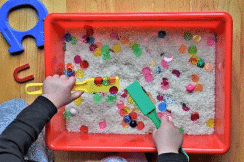
What is a sensory bin?
Tub or container filled with materials carefully selected to stimulate senses.
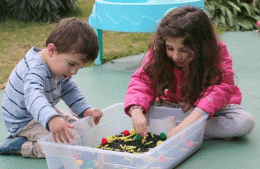
Why use sensory bins?
Because they are FUN and ENGAGING for all. And you can target…
Expressive/Receptive Language:
- Expand vocabulary (nouns, verbs, adjectives)
- Find objects (e.g. “Where is the __?”)
- Following directions (e.g. “Put beans in the bowl and dump it out”)
Social/Play Skills:
- Take turns and share objects
- Asking for objects
- Commenting on what each person is doing
- Pretend play
- Conversation (e.g. “I like the _. What do you like?”)
Articulation:
- Find objects/materials with the targeted sound (e.g. “sand” for /s/, “cars” for /k/)
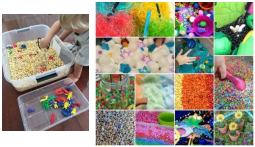
How can I make one?
Buy a small or large tub (usually $2-10) and fill it with different materials and textures:
- Soft: cotton balls, kinetic sand, feathers, marshmallows, pompoms
- Squishy: packing peanuts, cooked pasta, squishy toys, sponges
- Hard: beans, corn, rice, pasta, aquarium rocks, buttons, shells, beads, wood, Legos, chickpeas
- Wet: ice cubes, water, jelly beads, shaving cream, gelatin
- Objects: puzzle pieces, cars, balls, animal figures, shovels, scoopers, tongs, blocks, magnets, bowls
Want to share? This article is a sharable PDF as well.
Sensory Bin Inspiration!
Here are some of our favorite sensory bins we’ve created.
Winter Sensory Bin
When winter-themed decorations go on clearance at the craft stores, our therapists stock up! Here are ways you can use winter-themed items to target speech and language skills
- Prepositions and following directions
- Categories
- Adjectives and describing
- Answering questions
- Story creation/narration
- Vocabulary
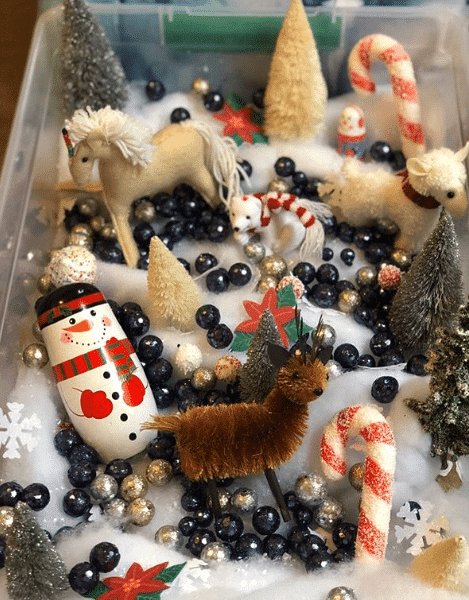

Fall Sensory Bin
This fall-themed sensory bin is perfect, especially if you love pumpkins!
- Basic Concepts: Describe the size, texture and color of the fall items like pumpkins, apples and leaves. Sort by similar features to practice “same” and “different”.
- Pretend play: Gather pumpkins and apples from you sensory bin for a fall harvest! Help your child think of the ingredients needed to make fruit pies for your feast.
- Articulation: Hide small fall-themed objects or pictures under the black bean dirt. Practice speech sounds as your child discovers hidden items and then make sentences with those words. This is also a great way to target seasonal vocabulary!

Farm & Vegetable Sensory Bin
We used this sensory bin in group therapy and our students had a blast. You can use this as a group of friends or family.
- Speech: animal sounds are an excellent way to get our little ones exploring early consonant-vowel combinations ( like “moo, oink, baa, neigh”) and Old MacDonald provides a perfect opportunity to practice vowels when singing “e-i-e-i-o”.
- Social Language: we made a “garden salad” for our animals to enjoy. Students labeled vegetables they found hiding in the corn and told the group which were their favorites. Everyone took turns asking follow-up questions to find out how peers liked to cook their vegetables and which of their favorite meals have vegetables. We learned our students love salad!
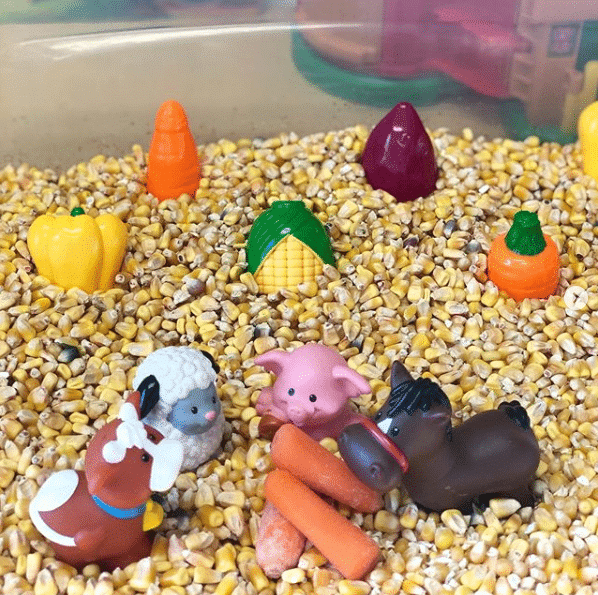
Summer Sensory Bin
We created two sensory bins we could pair with some favorite summer-themed books to practice
- Articulation: Hide items that contain your child’s speech sounds in the rice or kinetic sand
- Vocabulary: Describe the size, shape, color and other attributes of the objects found
- Imaginative Play: Create an ocean-themed birthday party using kinetic sand and shells to make a birthday cake, decorations and presents
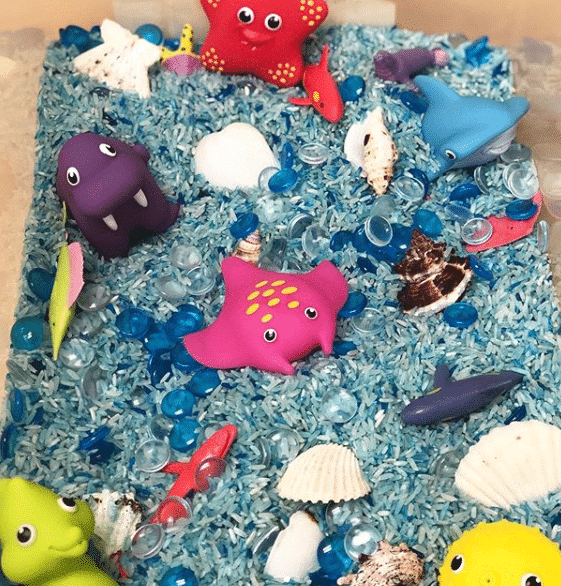
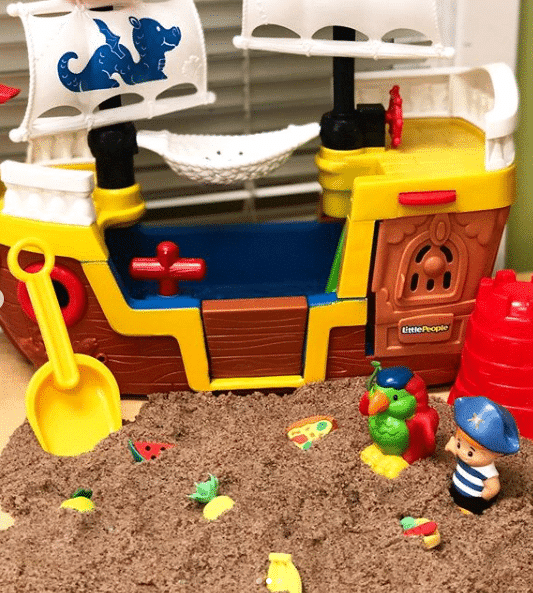
Valentine’s Day Sensory Bin
This bin was inspired by The Autism Helper. It uses dessert matching and rainbow rice to help students practice
- Following multiple step directions
- Self-advocacy (i.e. asking for help)
- Picture description
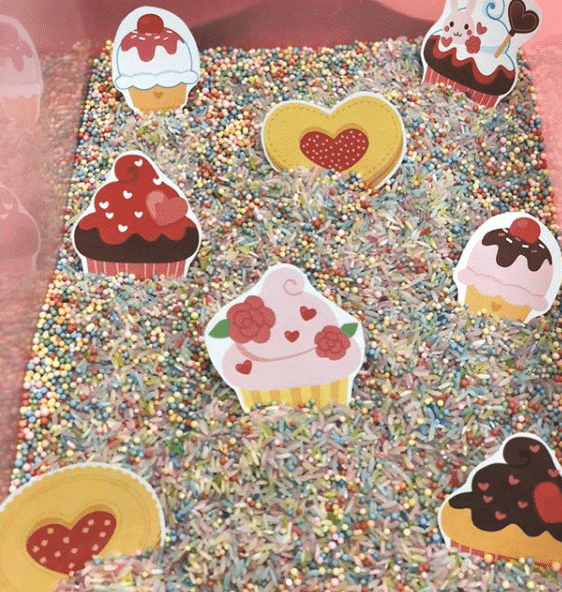
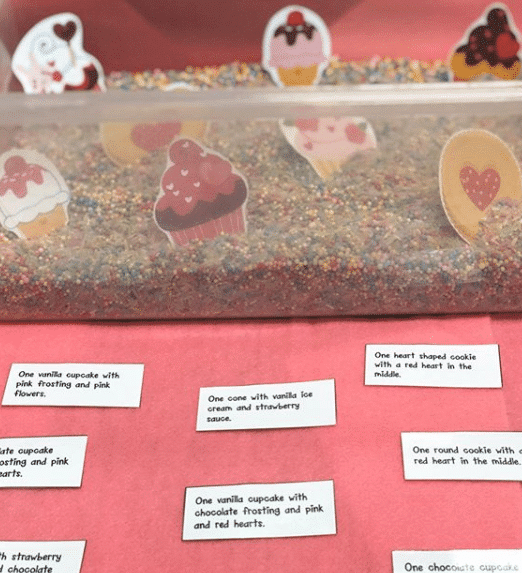
Check out our Pinterest page and Instagram page for more sensory bin inspiration and fun activities to target speech therapy goals in the home.
Want to receive more activities like this? Join our monthly mailing list! Subscribe here.
This post written for you by Sarah Denman, M.A. CCC-SLP and the Speech Department team of Columbus Speech & Hearing